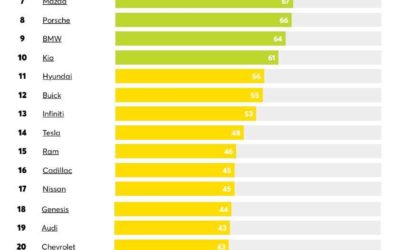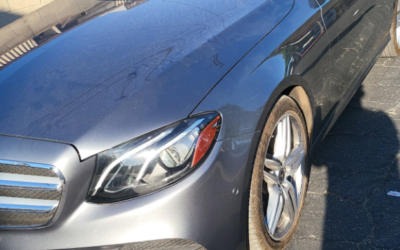Heavy rain can transform the simplest of drives into a potentially dangerous journey. Reduced visibility, slippery roads, and hydroplaning are just a few of the challenges you may face. However, with the right knowledge and precautions, you can safely navigate through heavy rain without putting yourself and others at risk. In this comprehensive guide, we will discuss essential tips and techniques to help you drive safely in rainy conditions.
1. Maintain Your Vehicle:
- Ensure your tires are in good condition with adequate tread depth. Bald tires can increase the risk of hydroplaning.
- Check your windshield wipers and replace them if they streak, skip, or leave streaks. Properly functioning wipers are crucial for visibility.
- Test your brakes to make sure they respond promptly. Wet roads require more braking distance.
- Ensure your headlights and taillights are working correctly, as they are vital for visibility in heavy rain.
2. Reduce Speed:
- Slow down! Wet roads significantly reduce traction, and driving at a lower speed gives you more time to react to changing conditions.
- Keep a safe following distance. Allow at least a three-second gap between your car and the vehicle in front of you. Increase this distance in heavy rain.
3. Use Proper Driving Techniques:
- Smooth and gentle inputs are key. Avoid sudden acceleration, braking, and sharp turns, as these actions can lead to skidding.
- Use your brakes wisely. Brake earlier and with less force than you would on dry roads to prevent skidding.
- If your car begins to hydroplane (when your tires lose contact with the road), do not panic. Ease off the accelerator, steer in the direction you want to go, and avoid sudden movements until your tires regain traction.
4. Improve Visibility:
- Turn on your headlights, even during the daytime. This increases your visibility to other drivers.
- Keep your windshield defogged and use the air conditioning to prevent fogging.
- Use your defrosters if necessary to maintain clear windows.
5. Avoid Standing Water:
- Steer clear of puddles and standing water whenever possible. You never know how deep they are, and driving through them can lead to hydroplaning.
- If you must drive through water, do so slowly and at a steady pace. Don’t create a bow wave, and avoid splashing pedestrians or other vehicles.
6. Plan Ahead:
- Check weather forecasts before your trip. If heavy rain is predicted, consider delaying your journey or finding an alternative route.
- Let someone know your travel plans and estimated arrival time, especially if you are embarking on a long journey in inclement weather.
7. Stay Informed:
- Listen to traffic updates on the radio or use a GPS app with real-time traffic information to stay aware of road closures or accidents.
8. Be Cautious at Intersections:
- Approach intersections with caution, as roads are often more slippery in these areas due to oil and debris buildup.
9. Maintain Control:
- Grip the steering wheel firmly with both hands to maintain control of your vehicle in wet conditions.
- Avoid distractions while driving, such as texting or using a smartphone. Concentrate on the road ahead.
10. Pull Over if Necessary:
- If the rain becomes too heavy, and visibility is severely compromised, consider pulling over to a safe location and waiting until conditions improve.
Remember, your safety and the safety of others should always be your top priority when driving in heavy rain. By following these tips and using common sense, you can reduce the risks associated with wet weather driving and arrive at your destination safely. Ultimately, being a responsible and cautious driver is the best way to prevent accidents in adverse weather conditions.
Essential Summer Car Maintenance Tips: Keep Your Vehicle Running Smoothly in the Heat












